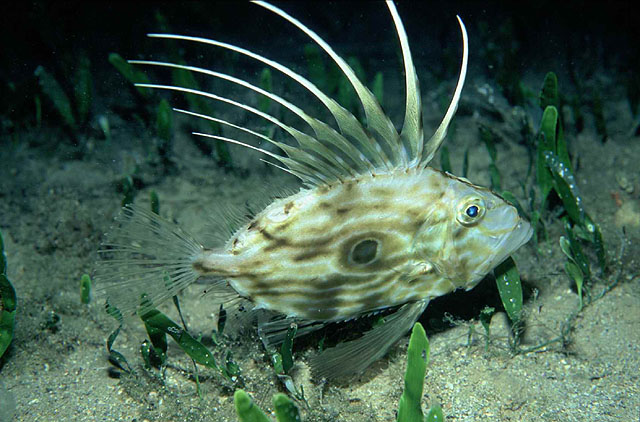| Zeidae (Dories) |
| 90 cm TL (male/unsexed); max.weight: 8,000.0 g; max. reported age: 12 years |
|
benthopelagic; brackish; marine; depth range 5 - 400 m, oceanodromous |
| Worldwide in distribution. Eastern Atlantic: Norway to South Africa, also the Mediterranean and Black Sea. Western Pacific: Japan, Korea, Australia and New Zealand. Also known from the Indian Ocean. |
|
Dorsal spines (total): 9-11; Dorsal soft rays (total): 22-24; Anal spines: 4-4; Anal soft rays: 20-23. Gill rakers rudimentary. Minute scales present. Highly compressed body (Ref. 4253). Large dark spot, surrounded by a light ring on each side of the body (Ref. 35388). |
| Found in areas close to the sea bed (Ref. 6390). Generally solitary. Feeds mainly on schooling bony fishes, occasionally on cephalopods and crustaceans (Ref. 27121). Reproduction takes place at the end of winter and at the start of spring in the northeastern Atlantic, earlier in the Mediterranean. Eggs are pelagic, maturity reached at 4 years (Ref. 36731). Sold fresh (Ref. 9563) and frozen (Ref. 9988). Can be steamed, fried, broiled, boiled, microwaved and baked (Ref. 9988). The flesh is excellent but is utilized little in West Africa (Ref. 5377). |
|
Data deficient (DD); Date assessed: 20 May 2013 Ref. (130435)
|
| harmless |
Source and more info: www.fishbase.org. For personal, classroom, and other internal use only. Not for publication.
